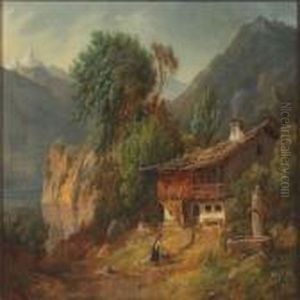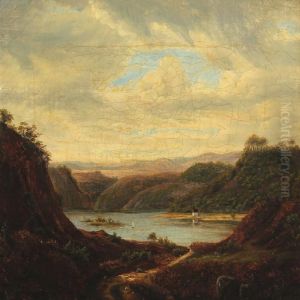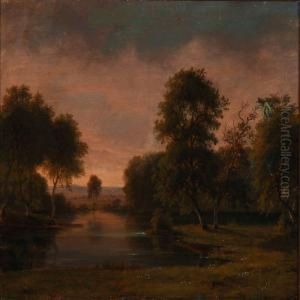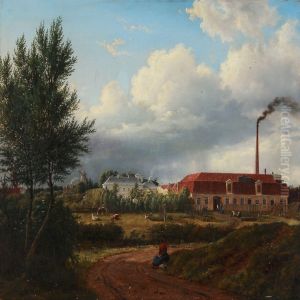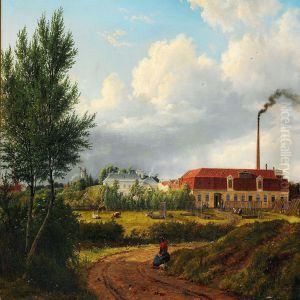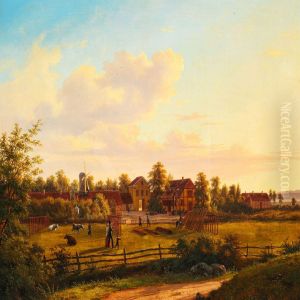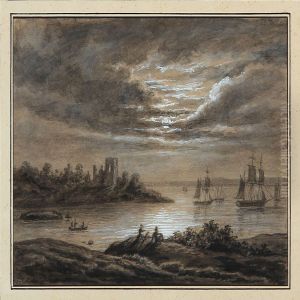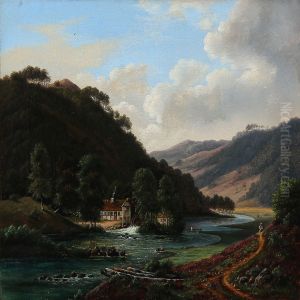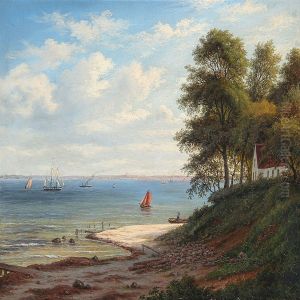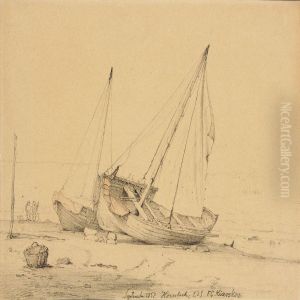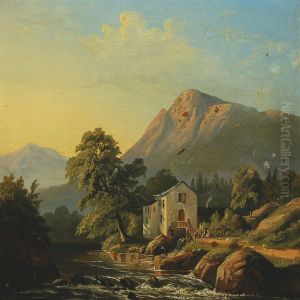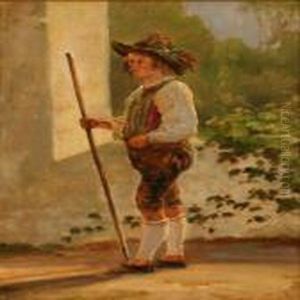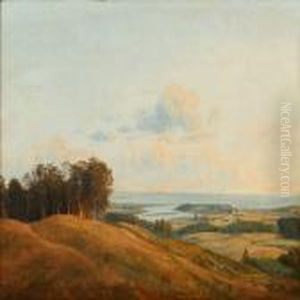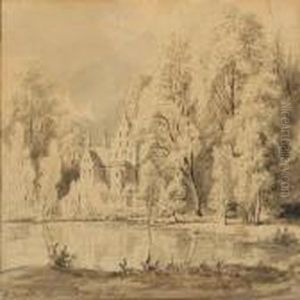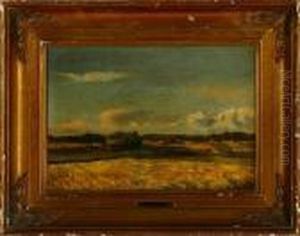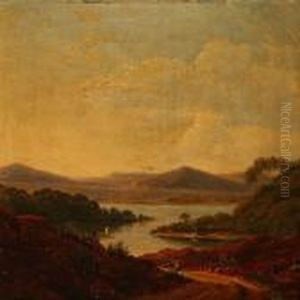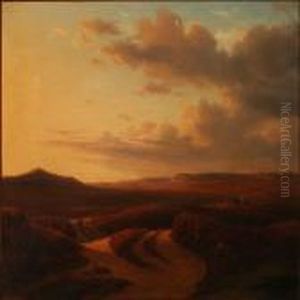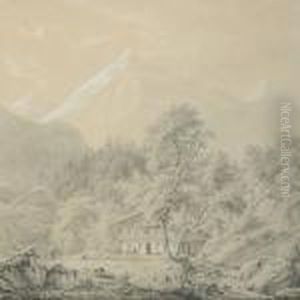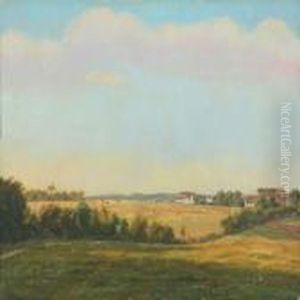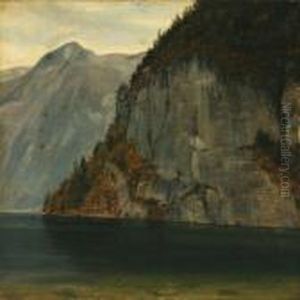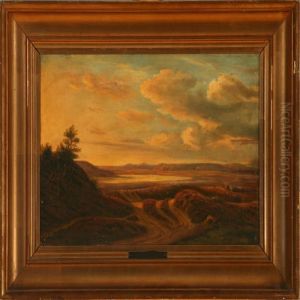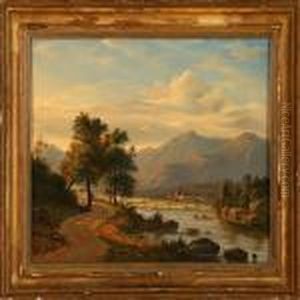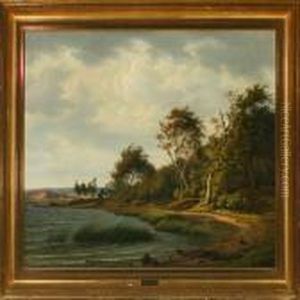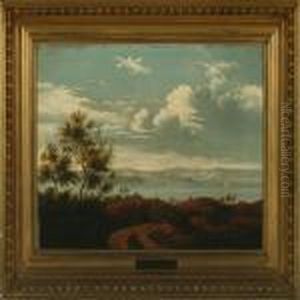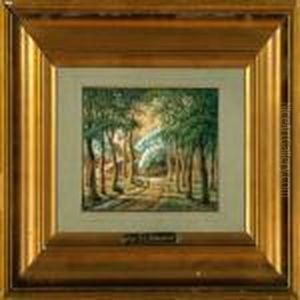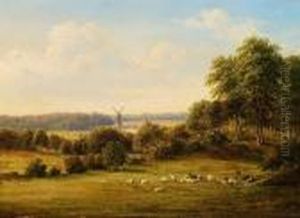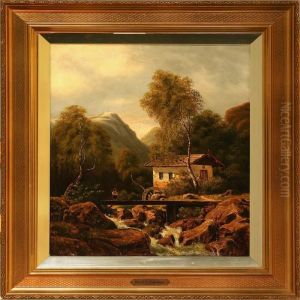F. C. Kiaerskou Paintings
Frederik Christian Kiaerskou, often abbreviated as F. C. Kiaerskou, was a Danish landscape painter born on April 23, 1825, in Copenhagen, Denmark. His artistic journey began under the guidance of Johan Ludwig Lund, who was among the leading figures in Danish art during the first half of the 19th century. Kiaerskou's early works were deeply influenced by the national romantic style, which was prevalent during his formative years.
In 1845, Kiaerskou entered the Royal Danish Academy of Fine Arts, where he continued to hone his skills. His dedication to his craft was evident, and he received several acknowledgments from the Academy, including the prestigious Neuhausen Prize in 1850, which he was awarded for a landscape painting. This recognition was a testament to his skill and potential in the realm of landscape art.
Throughout his career, Kiaerskou was best known for his depictions of the Danish countryside. His paintings often portrayed the serene beauty of rural areas, woodlands, and coastlines, executed with an attention to detail and a harmonious palette that captured the changing seasons and the play of light with sensitivity. Kiaerskou's landscapes are characterized by their tranquil atmosphere and a sense of timeless beauty, which resonated with the Danish public and were in harmony with the national romantic movement's ideals.
Kiaerskou's works were regularly exhibited at Charlottenborg, the exhibition hall of the Royal Danish Academy of Fine Arts, and he became a respected figure within the Danish art scene. His contributions to landscape painting helped pave the way for future generations of Danish artists.
F. C. Kiaerskou passed away on March 16, 1891, in Copenhagen. Though he may not be as widely recognized internationally as some of his contemporaries, his work remains an important part of the Danish cultural heritage. His landscapes continue to be appreciated for their idyllic representation of the Danish environment and their embodiment of the 19th-century artistic spirit.
